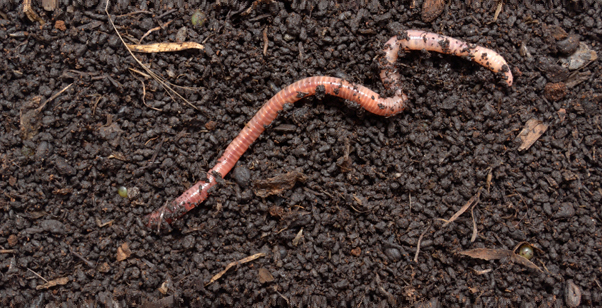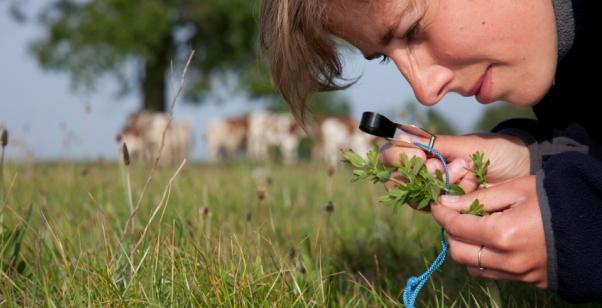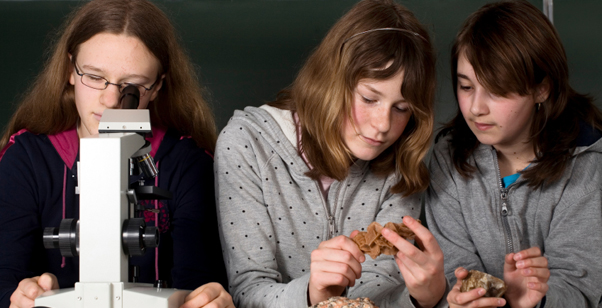Evaluating Visking tubing as a model for a gut
Class practical
Set up a length of Visking tubing and fill with a mixture of starch and glucose. Suspend in a boiling tube of water for a period of time. Periodically test the water outside the Visking tubing for the presence of starch and glucose. Establish that the Visking is permeable to glucose but not to starch. Compare the properties of Visking with the properties and function of the gut of a multicellular organism.
Lesson organisation
This activity prepares students for the investigation of the effect of amylase on starch and gives them an opportunity to practise handling Visking tubing in this way. It could be run as a demonstration, with selected students removing and testing samples, or as a class practical. Instructions below are for a class practical.
Apparatus and Chemicals
For each group of students:
Boiling tube, 1
Elastic band, 1
Iodine solution, in a dropper bottle (Note 3)
Benedict’s (qualitative) reagent (Note 4)
Starch suspension, 5 cm3
Glucose solution, 5 cm3
Teat pipette, 2
White dimple or spotting tile
Test tube, 4
Beaker, 100 cm3, 1
Kettle (to provide boiling water for a water bath)
For the class – set up by technician/ teacher:
Length of Visking tubing, knotted at one end, 15 cm, 1 per group
Syringe barrel, sawn off, 1 (Note 1 and diagram)
10 cm3 syringe, 6
Beaker of soluble starch, 250 cm3 (Note 2)
Beaker of glucose solution, 100 g dm–3 (10%) or more, 250 cm3
Health & Safety and Technical notes
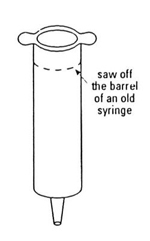
1 The end of an old syringe makes a convenient support for the Visking tubing.
2 Starch suspension – make fresh. Make a cream of 5 g soluble starch in cold water. Pour into 500 cm3 of boiling water and stir well. Boil until you have a clear solution.
3 Iodine solution (Refer to Hazcard 54B and Recipe card 39). A 0.01 M solution is suitable for starch testing. Make this by 10-fold dilution of 0.1 M solution. Once made, the solution is a low hazard but may stain skin or clothing if spilled.
4 Benedict’s (qualitative) reagent (refer to Recipe card 8). No hazard warning is required on the bottle as the concentrations of each of the constituents are low. Take care making up the reagent as sodium carbonate is an irritant to the eyes and copper(II) sulfate(VI) is harmful if swallowed. See Hazcards 27C and 95A.
5 Glucose solution – 10% or more.
Ethical issues
There are no ethical issues associated with this procedure.
Procedure
SAFETY: Wear eye protection when handling the chemicals.
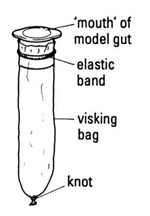
Preparation
a Soak the Visking tubing in water.
b Fasten the knotted length of Visking tubing to the sawn-off syringe barrel (see note 1) with an elastic band as shown in the diagram.
c Set out the beakers of starch and glucose, each with 3 x 10 cm3 syringes.
Investigation
d Set up a boiling tube and four test tubes in a rack.
e Set out a dimple tile, with dropper bottles of iodine solution and Benedict’s reagent in your work area.
f Collect a model gut made of Visking tubing.
g Use syringes to put 5 cm3 of starch suspension and 5 cm3 of glucose solution into your model gut.
h Rinse the outside of the Visking tubing under the tap then suspend it in the boiling tube.
i Use a teat pipette to remove about 1 cm3 of the 'gut' contents. Put one drop on the dimple tile, and the rest in a test tube. Then put the teat pipette back into the Visking tubing.
j With a second pipette, put water into the boiling tube until its level is the same as the gut contents.
k Start a stopclock.
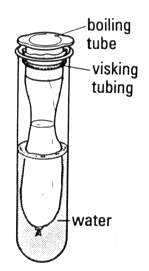
l Immediately use the second teat pipette to remove about 1 cm3 of the water. Put one drop on the dimple tile, and the rest in a test tube. Then put the teat pipette back in the water outside the Visking tubing.
m Test the drops of liquid in the dimple tile by adding one drop of iodine solution from the dropper bottle. If they turn blue-black, the liquid contains starch.
n Test the liquids in the test tubes by adding an equal volume of Benedict’s reagent and then place the test tubes in a beaker of boiling water for 2 to 3 minutes. If they turn orange (or greeny-yellow), the liquid contains glucose.
o After 15 minutes, sample the liquids inside and outside the tubing again. Ensure that you have a fresh sample by squeezing the pipette a couple of times to expel the remnants of any earlier sample and to mix the liquids well before sampling.
p Test a drop of each liquid with iodine solution and 1 cm3 with Benedict’s reagent as in m and n.
Teaching notes
This diagram shows starch and sugar molecules and the holes in Visking tubing.
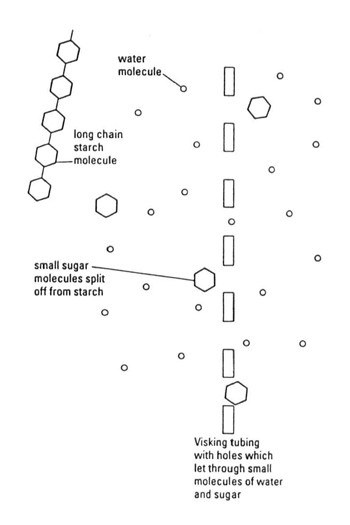
It can be hard for students to visualise the unseen molecules and tiny holes in this experiment. You could introduce additional models, such as chicken wire (or the net bags you buy oranges in) to represent the membrane, single poppet beads to represent glucose and chains of poppet beads to represent starch.
Health and safety checked, September 2008
Downloads
Download the student sheet ![]() Evaluating Visking tubing as a model for a gut with questions and answers.
Evaluating Visking tubing as a model for a gut with questions and answers.
